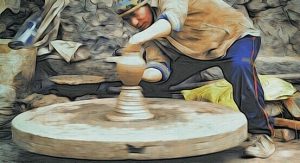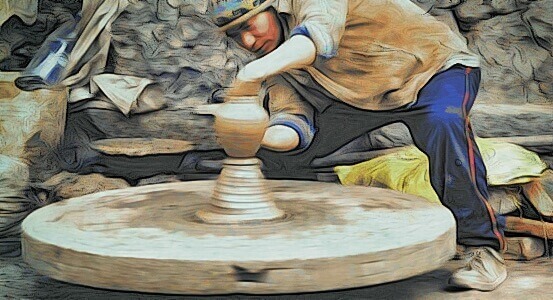
The Logic in Transportation Logistics
January 3, 2018
Texas Oil Meets Culture
January 23, 2018Big Wheels Keep on Turning.

Pottery Meets Transportation
The next time you see a truck rolling down the highway, pulling a flatbed, oversize, reefer, or heavy haul (yes, NATCO handles those), first thank your grade school art teacher and then thank the Sumerians.
We’re betting your art teacher gave you a lump of clay and challenged you to make some art. And you might still have that cup or bowl or something that looks like, um, a lump of clay, your name scratched into the base.
Your teacher was introducing you to the centuries-old tradition of pottery. We’ve been creating containers since 18,000 BC, using them for a variety of things, including cookware, storage, and trophies.
Fast-forward to 3,500 BC, give or take, when some Sumerian had a eureka moment and created the potter’s wheel: put your lump of wet clay on a flat horizontal plate, spin the plate, then use your hands and fingers to shape your creation.
Here’s where the story gets very interesting: Even though round things have long existed in nature—stones, worn by time and weather, are round; the Moon is round—that potter’s technique was likely the first use of a wheel in human history.
Then, another eureka moment. Somebody turned that potter’s wheel on its side. And it rolled away.
From this, we have the beginning of transportation, of moving things from one place to another.
We invented the axle to connect wheels. We invented contraptions to put on top of it those wheels order to hold things (think of a wheelbarrow). We invented the buggy, the automobile, the driveshaft, the semi-truck.
So, we have the intersection of pottery and transportation. All because an ancient Sumerian flipped that potter’s wheel from the horizontal to the vertical.
NATCO. Art class is in session.

